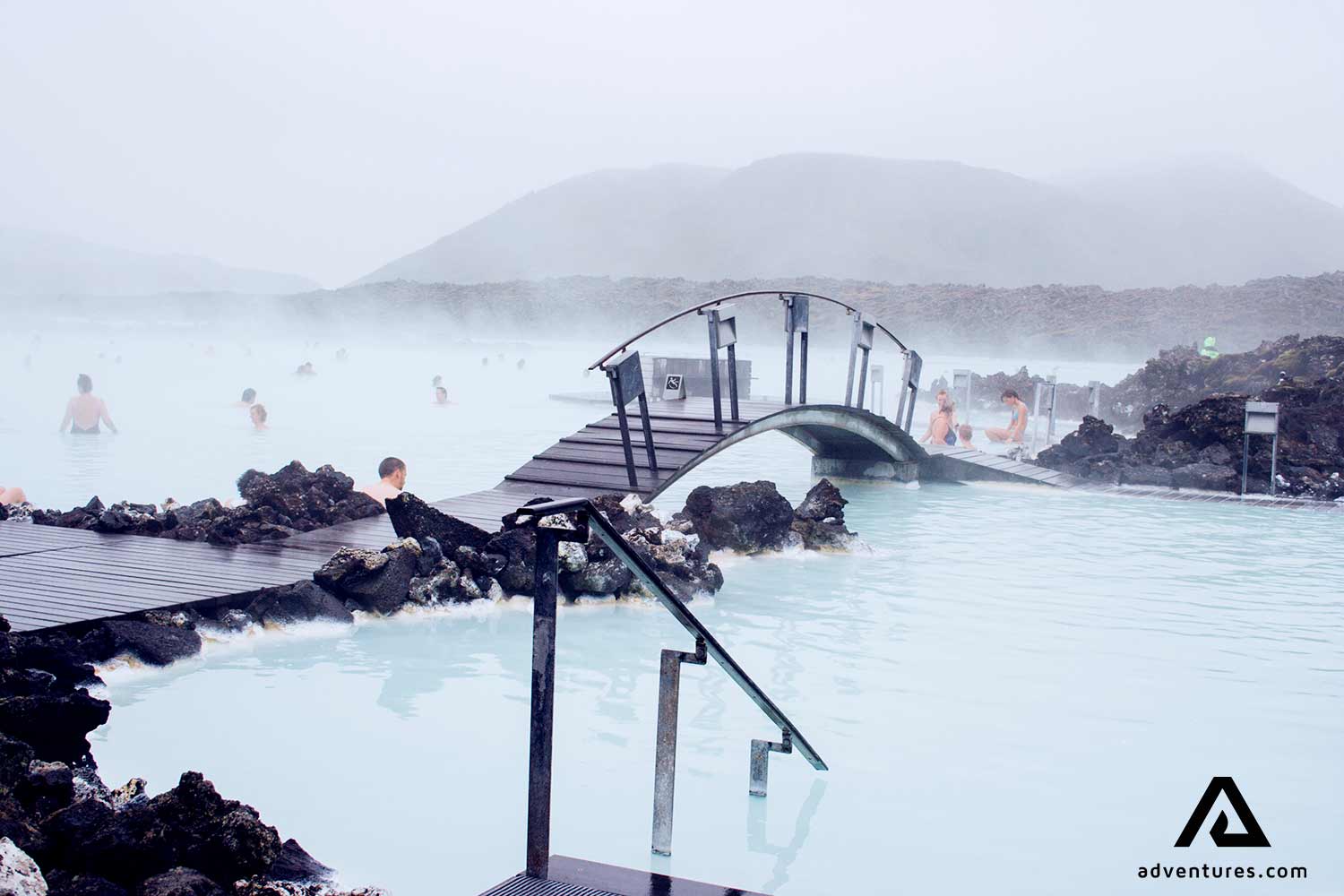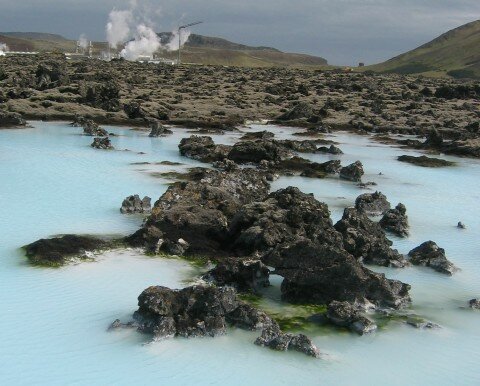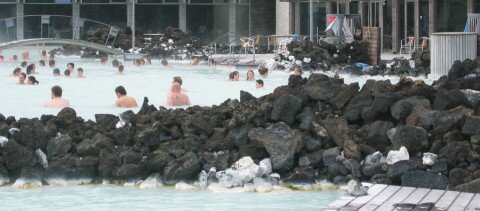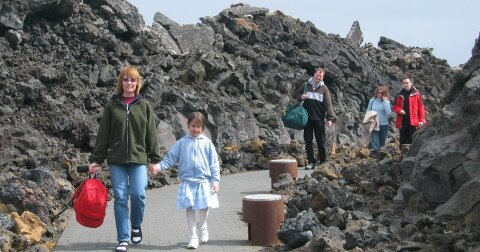Lets travel to the most cold icy place in the world, Iceland. It is a Nordic European island country in the North Atlantic Ocean, on the Mid-Atlantic Ridge. The country has a population of about 320,000 and a total area of 103,000 km2 (40,000 sq mi). The capital and the largest city is Reykjavík, with the surrounding areas in the southwestern region of the country being home to two-thirds of the country's population. Iceland is volcanically and geologically active. The interior mainly consists of a plateau characterised by sand fields, mountains and glaciers, while many glacial rivers flow to the sea through the lowlands. Iceland is warmed by the Gulf Stream and has a temperate climate despite a high latitude just outside the Arctic Circle.
 |
| What an amazing fluoroscent water |
The vulcanic activity in Iceland has create what an amazing natural view and also beautifull place to be enjoyed, The Blue Lagoon. The Blue Lagoon (Icelandic: "Bláa lónið") geothermal spa is one of the most visited attractions in Iceland. this 5,000-square-meter lagoon holds six million liters of bright blue seawater atop a sand-like base (made of skin-softening minerals).The steamy waters are part of a lava formation. The spa is located in a lava field in Grindavík on the Reykjanes Peninsula, southwestern Iceland. The Blue Lagoon spa and geothermal complex is clearly visible from any of the usual satellite imagery sources at coordinates (63.880, -22.449).
 |
| Lets take a bath |
The Blue Lagoon is perhaps the most supernatural looking body of water on Earth. Descriptions of its waters range everywhere from “the same color as the new Gatorade drink” to “frosty blue.” Though the latter term may sound good, the water in the lagoon is anything but “frosty.” The warm waters are rich in minerals like silica and sulphur and bathing in the Blue Lagoon is reputed to help some people suffering from skin diseases such as psoriasis. The water temperature in the bathing and swimming area of the lagoon averages 37–39 °C (98–102 °F). The Blue Lagoon also operates a Research and Development facility to help find cures for other skin ailments using the mineral-rich water. Though the lagoon looks like something born from Iceland’s otherworldly landscape, it is actually man made. It was created by run-off from the Svartsengi power plant, which pumps up the geothermally heated water from a full mile below the surface. After being used to generate both heat and electricity, the excess (which is absolutely clean) is ejected into the lagoon.
 |
| Lava and steam |
The lagoon is fed by the water output of the nearby geothermal power plant Svartsengi and is renewed every 2 days. Superheated water is vented from the ground near a lava flow and used to run turbines that generate electricity. After going through the turbines, the steam and hot water passes through a heat exchanger to provide heat for a municipal hot water heating system. Then the water is fed into the lagoon for recreational and medicinal users to bathe in.
Iceland has a strict code of hygiene and guests are required to shower without clothing in the communal shower area before and after bathing. It is claimed that in June 2007 the Blue Lagoon appeared green, bewildering both residents and tourists of Iceland. Squeamish about sharing a bath with thousands of strangers? The Lagoon is actually quite clean, as the water is completely replaced every two days. In fact, the Blue Lagoon holds a Blue Flag (a recognition usually given to beaches) for water cleanliness.
 |
| Many people spend their time to take a bath |
The Blue Lagoon was used as the pit stop for the first leg of The Amazing Race 6. The Blue Lagoon was used for the thermal spa scenes in the filming of Hostel: Part II. It was also shown in the Incubus documentary Look Alive, when the band visited Iceland. It was also shown in fifth cycle of Britain's Next Top Model which used as photoshoot location.
In fact, one of the best times to visit the Blue Lagoon is during a light snowfall, as the contrast between the cold air and the heated water can't be beat.
How To Get To The Blue Lagoon.
The Blue Lagoon is situated approximately 13 km (8 miles) from the Keflavík International Airport and 39 km (24 miles) from the capital city of Reykjavík. That is roughly a 20 minute drive from the airport and a 40 minute drive from Reykjavík. So after you arrived in this airport you can take taxi or bus tours to visit this place. Numerous tour companies run bus trips to the Blue Lagoon, but you're really much better doing it on your own, as it's easy to get to, and pretty self-explanatory when you get there. For ease of access, you can't beat thehotel such as Blue Lagoon Clinic Hotel. Just a five-minute walk from the Lagoon, rooms feature amazing views of the nearby lava fields. Best of all, the room rates, which start around $145 for a single, include admission to the Lagoon—a $40 value.
 |
| Walking to the blue lagoon |
No need to worry about place to live, because there are so many hotels from the cheapest one untill the expensive one to be booked. So what are you waiting for, you should put on the list this place as one of your holidays destination.



 11:40 PM
11:40 PM
 Unknown
Unknown

 Posted in:
Posted in: 


0 comments:
Post a Comment